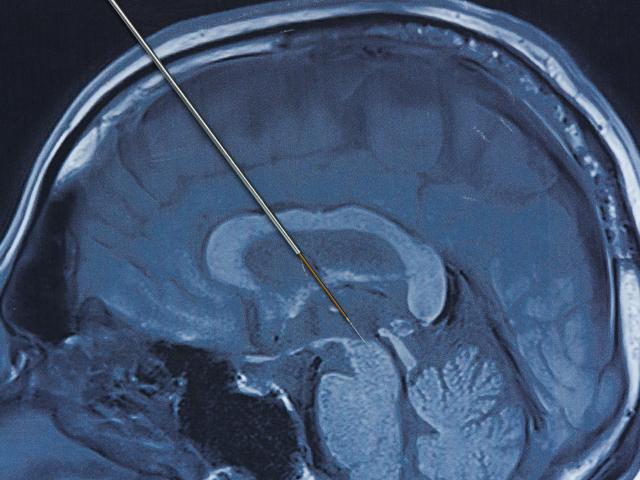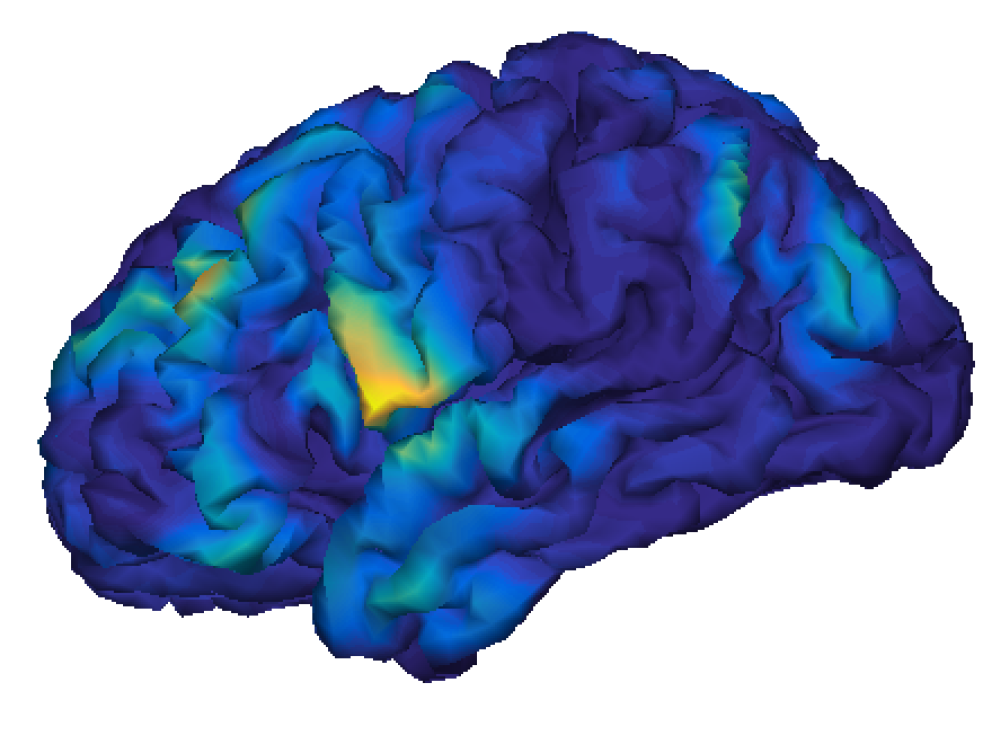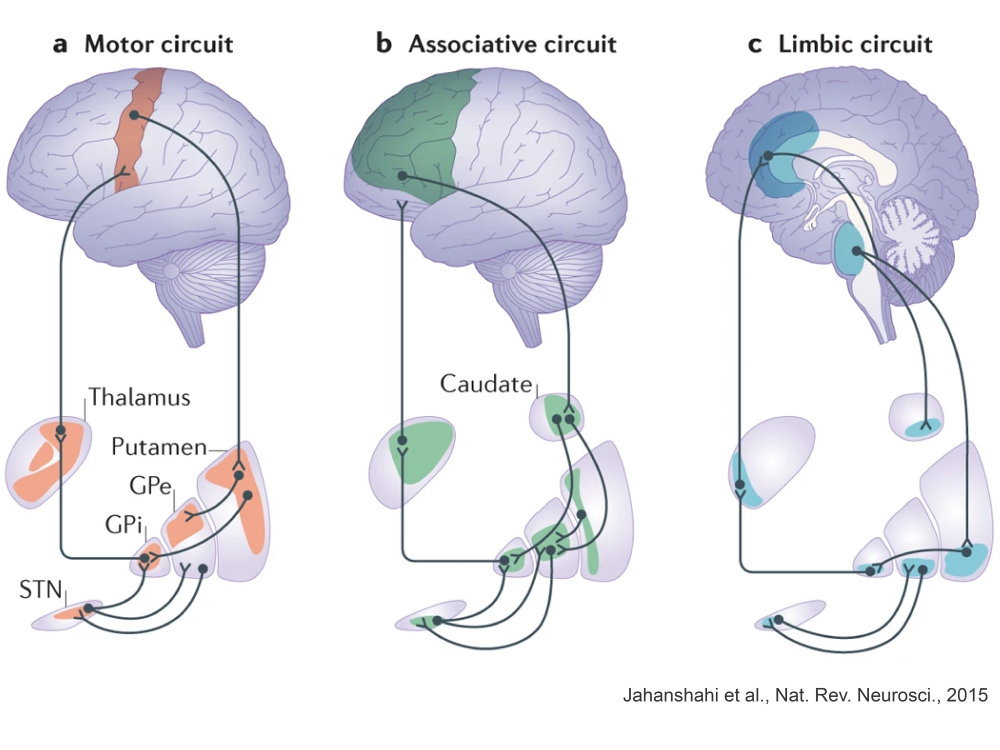
Intracranial recordings
Intracranial recordings involve placing electrodes inside the brain to directly monitor electrical activity in specific areas. This method is particularly valuable because it’s the only way to study the activity of deep brain regions, like the basal ganglia, which can’t be accessed by other techniques. The basal ganglia, along with other parts of the brain, play a vital role not only in controlling movement but also in thinking and emotions. These brain regions are affected in Parkinson’s disease, but their exact functional role is not yet fully understood. By capturing real-time brain activity, intracranial recordings help us gain insight into how these brain areas work during different tasks. This approach is especially important for understanding abnormal brain activity in conditions like Parkinson’s disease and is key to developing new treatments, such as adaptive deep brain stimulation, which aims to restore normal brain function.

EEG
Electroencephalography (EEG) is a non-invasive technique that measures the brain's electrical activity by placing small sensors, called electrodes, on the scalp. EEG allows us to record signals from the entire surface of the brain, or cortex, providing a broad overview of brain activity across different regions. Unlike intracranial recordings, which focus on specific deep brain areas, EEG offers a more comprehensive picture of cortical activity. This makes EEG especially useful for studying overall brain function and detecting patterns related to various mental states, such as movement or memory.

Combining EEG and intracranial recordings
Combining EEG and intracranial recordings provides a more complete picture of brain activity. EEG monitors the brain's surface, offering an overview of how different regions on the surface function, while intracranial recordings focus on specific deep brain areas. By using both methods together, we can better understand how various parts of the brain, specifically within basal ganglia-cortical networks affected by Parkinson’s disease, interact.